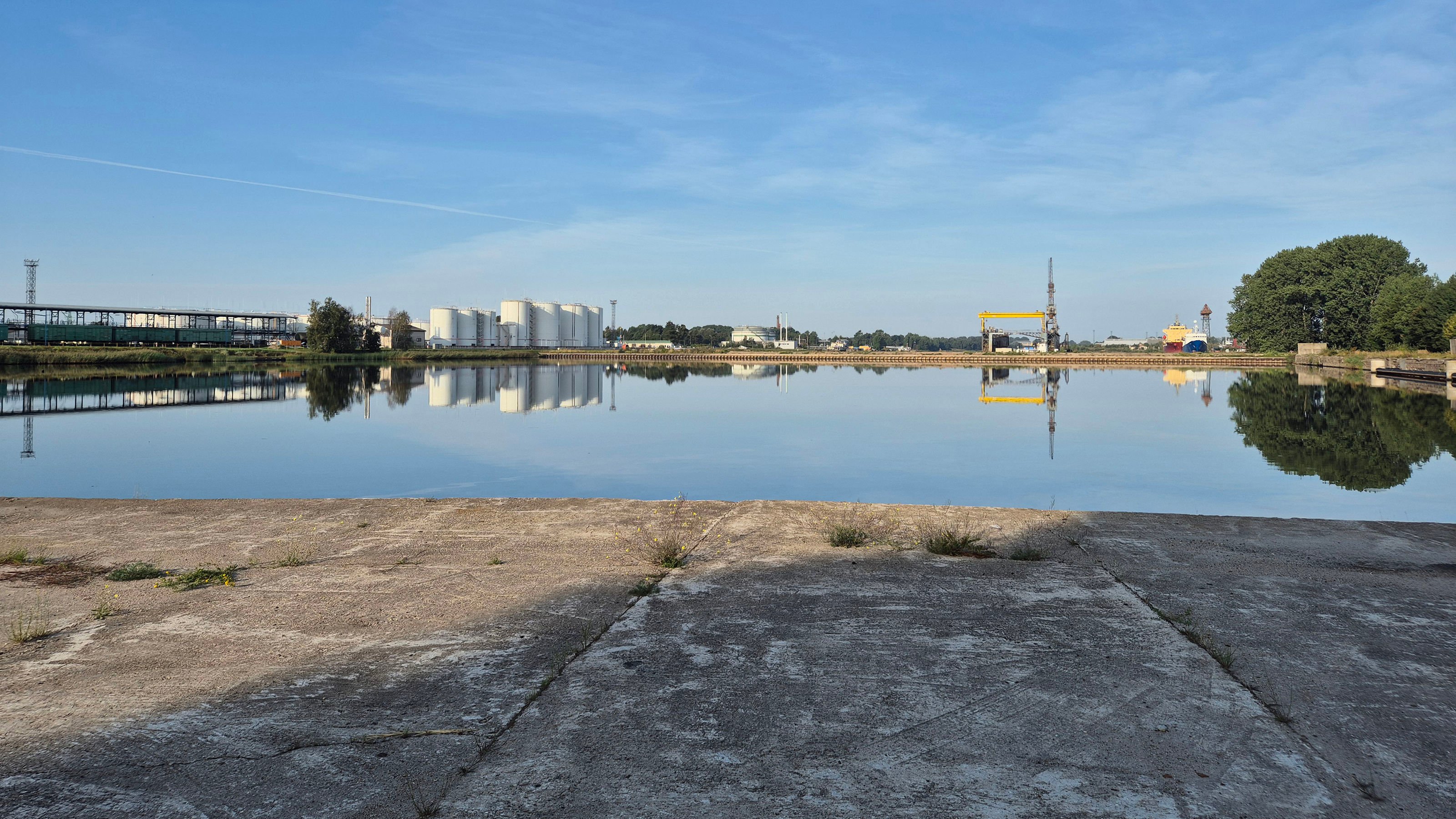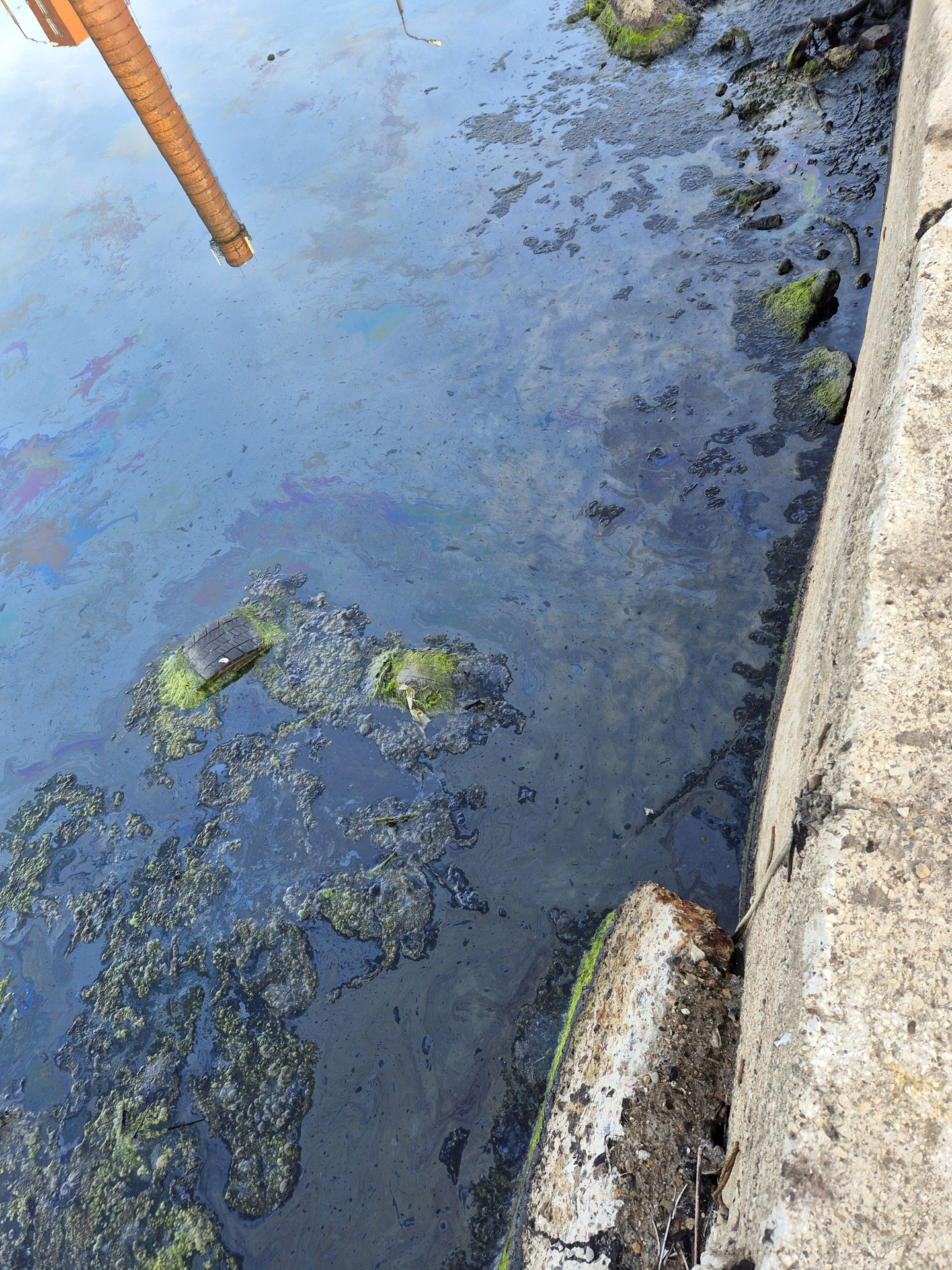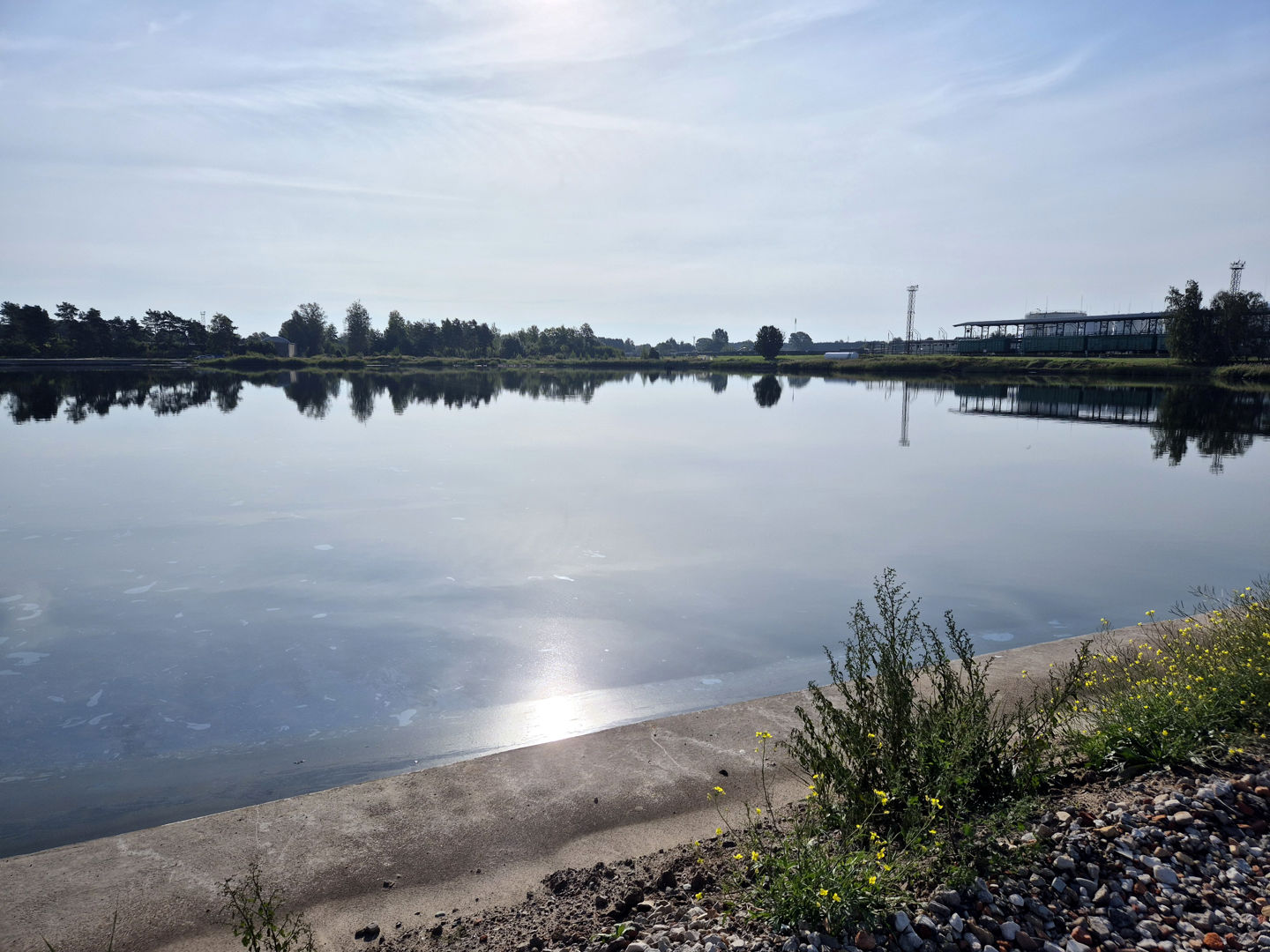NGI and NIVA help Latvia clean up after Soviet naval fleet
In the highly polluted Karosta Canal in Liepaja in Latvia, NIVA and NGI are helping local port authorities clean up the most contaminated areas. NGI is engaged in a feasibility study to assess the most environmentally friendly and economical future handling of the dredged, polluted sediments placed in a limited part of the canal.

Contaminated sediments from the Soviet era are now placed in an open basin. NGI is now helping local authorities to investigate solutions. ( Photo: Marion Børresen, NGI. )
– On behalf of the Liepaja Special Economic Zone Authorities (LSEZ), three alternative solutions are being investigated for the contaminated sediments which are currently placed in an open basin with direct contact with the water in the canal: No measures be taken (only monitoring), capping ( the masses are covered by a thin layer of clean masses/materials) or the pool is completely filled with masses to above the water level, says project manager for NGI, Marion Børresen about the feasibility study.
This is a project made possible through EEA funds. The work started in August this year and will be completed during October.
Thirty years of clean-up
The work to clean up what during the Soviet era was one of the Soviet Union's most important naval bases in the Baltic Sea began in the late 1990s. The Karosta Canal, built in 1890 under Tsar Alexander III's regime, was filled with shipwrecks, scrap metal, batteries, chemicals, and oils when the Soviet Union withdrew in 1991 and Latvia became an independent state again. The military area around the canal was then turned into a civilian area with, among other things, housing. In 1996, environmental and geotechnical investigations of the sediments in the canal began. Studies were carried out to find the most suitable solutions for further handling the pollution detected in the canal, and in 2001, a separate demarcated area was established for the most polluted sediments.

The Soviet naval base left behind pollution such as chemicals and oils. ( Photo: Marion Børresen, NGI. )
Norwegian expertise in demand
Norway has long experience in cleaning up polluted seabeds. Together with the Norwegian Environment Agency, NGI, and NIVA have developed several guides and tools for how contaminated sediments should be handled. NGI and NIVA's work in the Karosta Canal to clean up this historically significant area strengthens the ties between Latvia and Norway. The port authorities in Liepaja believe that, through collaboration with NGI and NIVA, they have gained valuable expert knowledge about the environment, engineering, and geotechnics.
Measures effect of covering
In the feasibility study that NGI is now handing over to the local port authorities, we have, among other things, used the modeling tool CapSim to calculate the effect of covering the contaminated sediments.
– Among other things, we enter the concentration of environmental toxins in the masses and solubility coefficients for the various substances to model what strength and type of material the covering layer must consist of to satisfy given limit values, explains Børresen.

The Karosta channel: The port authorities in Liepaja believe that, through collaboration with NGI and NIVA, they have gained valuable expert knowledge about the environment, engineering, and geotechnics. ( Photo: Marion Børresen, NGI.)